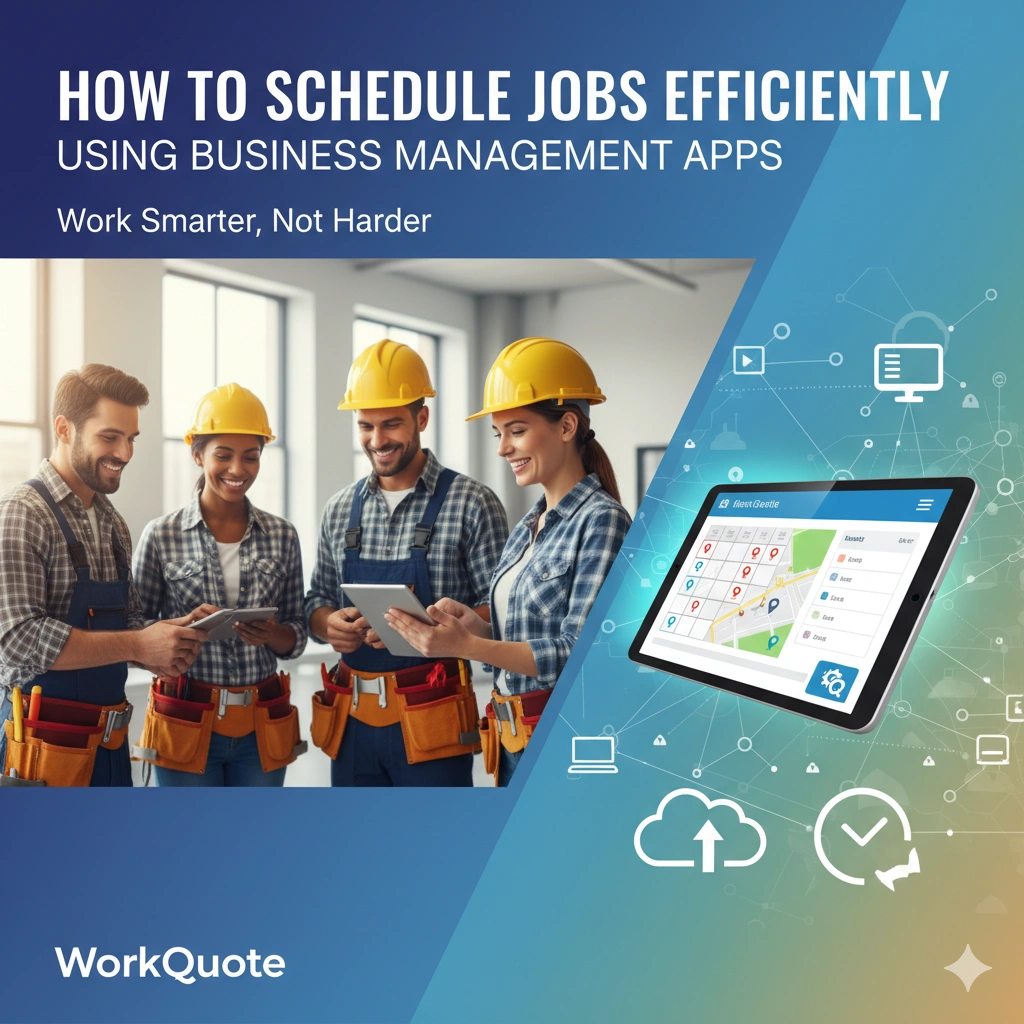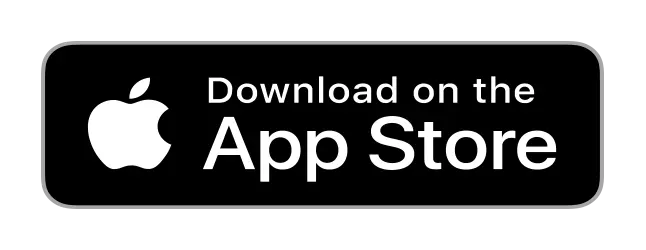
Discover proven strategies for streamlining job scheduling with business management apps to boost productivity, reduce conflicts, and improve client satisfaction. Learn how to optimize your workflow and maximize efficiency in your service business.
The Foundation of Efficient Job Scheduling
Effective job scheduling forms the backbone of any successful service business. Whether you're managing a lawn care operation, running an HVAC company, or operating as a freelance photographer, the ability to organize and optimize your work schedule directly impacts your profitability and client satisfaction.
Modern business management apps have revolutionized how service professionals approach scheduling. These digital tools eliminate the chaos of paper calendars and scattered sticky notes, replacing them with intelligent systems that can prevent double-bookings, optimize travel routes, and automatically notify clients of upcoming appointments.
The key to successful scheduling lies in understanding that it's not just about filling time slots. It's about creating a strategic framework that maximizes your productivity while maintaining the flexibility to handle unexpected changes and urgent requests.
Essential Features for Effective Job Scheduling
When evaluating business management apps for scheduling purposes, certain features prove indispensable for maintaining operational efficiency. Understanding these core capabilities helps you make informed decisions about which tools will best serve your business needs.
Calendar Integration and Synchronization
The most effective scheduling apps seamlessly integrate with your existing calendar systems. This integration ensures that personal appointments, business meetings, and job schedules all exist within a unified view, preventing conflicts and oversights.
Look for apps that offer real-time synchronization across multiple devices. This capability allows you to update schedules from your phone while in the field and have those changes immediately reflected on your office computer or tablet.
Client Communication Tools
Automated client notifications represent a game-changing feature for busy service professionals. The best scheduling apps send confirmation messages, appointment reminders, and schedule change notifications without requiring manual intervention.
These communication tools typically include customizable message templates, allowing you to maintain your brand voice while ensuring consistent, professional communication with clients.
Resource and Team Management
For businesses with multiple team members or specialized equipment, resource management becomes crucial. Advanced scheduling apps allow you to assign specific technicians to jobs based on their skills, availability, and location.
Equipment scheduling ensures that necessary tools and materials are available when needed, preventing costly delays and return trips to job sites.
Strategic Scheduling Techniques
Implementing effective scheduling strategies goes beyond simply filling available time slots. Smart scheduling considers factors such as geographic efficiency, job complexity, and client preferences to create optimized daily workflows.
Geographic Clustering
One of the most impactful scheduling strategies involves grouping jobs by geographic location. This approach minimizes travel time between appointments, reduces fuel costs, and allows you to serve more clients in a given day.
Modern business management apps often include mapping features that visualize job locations, making it easy to identify clustering opportunities. Some advanced systems even suggest optimal routing between appointments.
Time Buffer Management
Experienced service professionals understand the importance of building buffer time into their schedules. These strategic gaps account for unexpected delays, traffic conditions, and jobs that run longer than anticipated.
Effective buffer management typically involves adding 15-30 minutes between appointments, depending on your industry and typical job complexity. This practice prevents the domino effect of delays that can disrupt an entire day's schedule.
Priority-Based Scheduling
Not all jobs carry equal importance or urgency. Implementing a priority-based scheduling system ensures that critical appointments receive prime time slots while routine maintenance can be scheduled during less optimal periods.
Consider factors such as client value, job profitability, and deadline sensitivity when assigning priority levels. Emergency services should always maintain reserved capacity for urgent requests.
Automation and Workflow Optimization
The true power of business management apps emerges through their automation capabilities. By reducing manual scheduling tasks, these tools free up valuable time for revenue-generating activities while minimizing human error.
Recurring Appointment Management
Many service businesses rely heavily on recurring appointments, such as weekly lawn maintenance or monthly HVAC inspections. Automated recurring scheduling eliminates the need to manually create these appointments while ensuring consistent service delivery.
Advanced systems allow for flexible recurring patterns, accommodating seasonal variations and client-specific preferences. For example, lawn care schedules might automatically adjust frequency based on seasonal growth patterns.
Intelligent Scheduling Suggestions
Machine learning capabilities in modern scheduling apps can analyze historical data to suggest optimal appointment times. These systems consider factors such as job duration patterns, client preferences, and your peak productivity periods.
Some apps even learn from your scheduling decisions over time, becoming more accurate in their suggestions and helping you identify opportunities for efficiency improvements.
Managing Schedule Changes and Cancellations
Even the most carefully planned schedules require adjustments. Effective business management apps provide tools for handling changes gracefully while minimizing disruption to your workflow and client relationships.
Flexible Rescheduling Options
When clients need to reschedule appointments, having streamlined processes in place prevents administrative headaches. Look for apps that offer drag-and-drop rescheduling interfaces and automated availability checking.
Client self-service portals can be particularly valuable, allowing customers to view available time slots and reschedule appointments without requiring phone calls or email exchanges.
Waitlist Management
Implementing a waitlist system helps you capitalize on last-minute cancellations while providing additional service options for clients with flexible schedules. When appointments become available, the system can automatically notify waitlisted clients.
This approach maximizes schedule utilization while demonstrating responsiveness to client needs, often resulting in improved customer satisfaction and loyalty.
Integration with Business Operations
The most effective scheduling solutions don't operate in isolation. They integrate seamlessly with other business functions, creating a unified operational ecosystem that streamlines workflows from initial client contact through final payment.
Estimate and Invoice Coordination
When scheduling apps integrate with estimating and invoicing systems, the entire client lifecycle becomes more efficient. Job details from estimates automatically populate work orders, and completed jobs trigger invoice generation.
This integration eliminates duplicate data entry while ensuring consistency across all client touchpoints. It also provides valuable insights into job profitability and scheduling efficiency.
Expense and Time Tracking
Comprehensive business management apps often include time tracking capabilities that automatically log hours spent on scheduled jobs. This data proves invaluable for accurate billing, productivity analysis, and future estimate preparation.
Expense tracking integration allows technicians to record job-related costs in real-time, ensuring accurate project accounting and improving profitability analysis.
Performance Monitoring and Optimization
Continuous improvement requires data-driven insights into scheduling performance. The best business management apps provide analytics tools that help identify bottlenecks, optimize resource allocation, and improve overall operational efficiency.
Key Performance Indicators
Monitor metrics such as schedule utilization rates, average travel time between jobs, and client satisfaction scores. These indicators reveal opportunities for improvement and help validate the effectiveness of scheduling strategies.
Track cancellation rates and no-show percentages to identify patterns that might indicate communication issues or scheduling conflicts. Customer service best practices can help reduce these disruptions.
Capacity Planning
Understanding your true scheduling capacity helps prevent overcommitment while identifying opportunities for growth. Analyze historical data to determine realistic daily job limits and optimal scheduling patterns.
Consider seasonal variations in demand and adjust capacity planning accordingly. This foresight enables better resource allocation and more accurate client communication regarding availability.
Mobile Accessibility and Field Operations
Modern service businesses require scheduling solutions that work seamlessly in the field. Mobile-optimized apps ensure that technicians can access schedules, update job status, and communicate with clients regardless of their location.
Offline Functionality
Reliable internet connectivity isn't always available in the field. The best scheduling apps provide offline functionality, allowing technicians to access essential information and update job status even without network connectivity.
When connectivity returns, these systems automatically synchronize data, ensuring that office staff and clients receive timely updates about job progress and completion.
GPS and Navigation Integration
Built-in GPS functionality helps technicians navigate efficiently between job sites while providing real-time location updates to dispatchers and clients. This transparency improves client communication and enables better coordination of emergency responses.
Some advanced systems use GPS data to automatically track travel time and update arrival estimates, providing clients with accurate information about technician arrival times.
Client Experience Enhancement
Effective scheduling directly impacts client satisfaction and retention. Business management apps that prioritize the client experience create competitive advantages while reducing administrative overhead.
Self-Service Scheduling
Online booking portals allow clients to schedule appointments at their convenience, reducing phone tag and administrative workload. These systems can display real-time availability while enforcing business rules about minimum notice periods and service area restrictions.
Self-service options appeal to clients who prefer digital interactions while freeing up staff time for more complex customer service tasks.
Proactive Communication
Automated reminder systems reduce no-shows while demonstrating professionalism and attention to detail. Customize communication timing and methods based on client preferences, offering options for email, text, or phone reminders.
Include relevant job details in communications, such as estimated duration, required preparations, and technician information. This transparency helps clients prepare appropriately and reduces day-of-service confusion.
Security and Data Protection
Business scheduling apps handle sensitive client information and operational data. Ensuring robust security measures protects both your business and your clients from potential data breaches and privacy violations.
Data Encryption and Backup
Look for apps that implement industry-standard encryption for data transmission and storage. Regular automated backups ensure that scheduling data remains accessible even in the event of system failures or security incidents.
Cloud-based solutions often provide superior security infrastructure compared to local systems, with professional-grade security monitoring and regular security updates.
Access Control and User Management
Implement role-based access controls to ensure that team members can only access information relevant to their responsibilities. This approach minimizes security risks while maintaining operational efficiency.
Regular access reviews help ensure that former employees and contractors no longer have system access, reducing potential security vulnerabilities.
Future-Proofing Your Scheduling System
As your business grows and evolves, your scheduling needs will change. Selecting scalable business management apps ensures that your investment continues to provide value as your operations expand.
Scalability Considerations
Evaluate whether potential scheduling solutions can accommodate increased job volume, additional team members, and expanded service areas. Small business growth strategies often require more sophisticated scheduling capabilities.
Consider integration capabilities with other business systems you might adopt in the future, such as customer relationship management platforms or advanced analytics tools.
Technology Evolution
Stay informed about emerging technologies that might enhance scheduling efficiency. Artificial intelligence, machine learning, and predictive analytics continue to evolve, offering new opportunities for optimization.
Choose vendors that demonstrate commitment to innovation and regular feature updates. This approach ensures that your scheduling system remains competitive and efficient over time.
Implementation Best Practices
Successfully transitioning to a new scheduling system requires careful planning and execution. Following proven implementation strategies minimizes disruption while maximizing the benefits of your new business management app.
Data Migration and Setup
Begin by auditing your existing scheduling data and processes. Clean up inconsistencies and outdated information before migrating to the new system. This preparation ensures a smoother transition and better long-term data quality.
Test the new system thoroughly with a subset of your operations before full deployment. This approach allows you to identify and resolve issues without disrupting your entire business operation.
Team Training and Adoption
Invest in comprehensive training for all team members who will use the new scheduling system. Employee training best practices emphasize the importance of hands-on practice and ongoing support.
Create documentation and quick reference guides that team members can consult when questions arise. This resource reduces the learning curve and improves system adoption rates.
Efficient job scheduling through business management apps represents a critical competitive advantage for service businesses. By implementing the strategies and best practices outlined in this guide, you can optimize your operations, improve client satisfaction, and position your business for sustainable growth. The investment in proper scheduling tools and processes pays dividends through increased productivity, reduced administrative overhead, and enhanced professional reputation.

